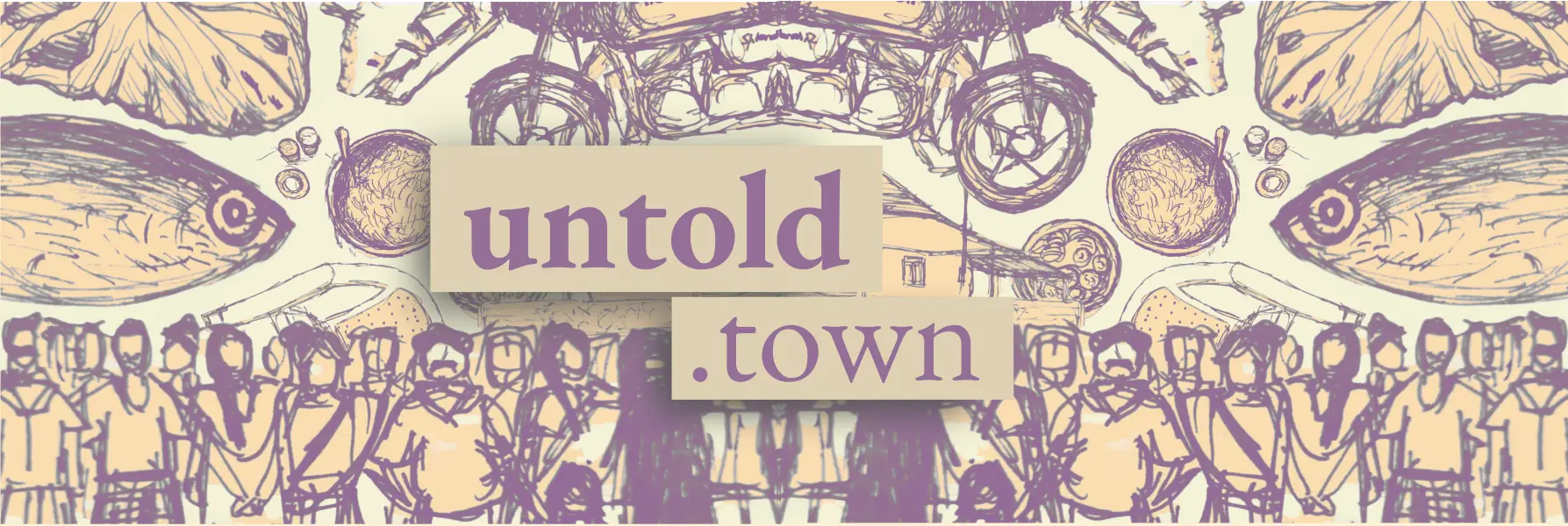The Living Agri - ‘Culture’: on Reviving Agriculture as a Culture
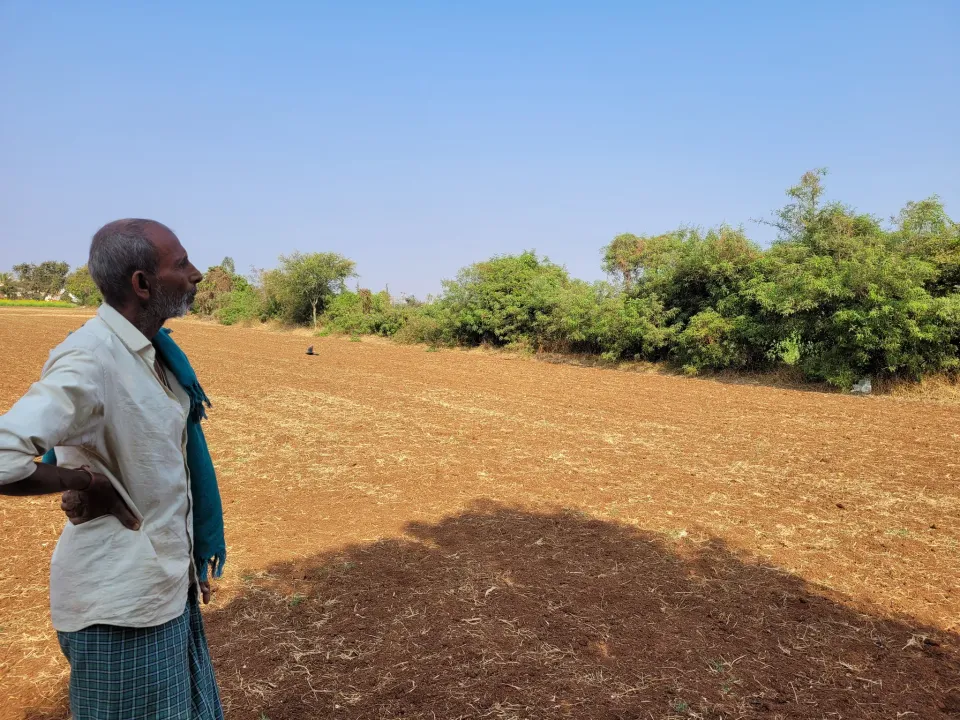
Veerbhushan Nandgaon, Abhishek Patil, Harshawardhan Rathod.
“We have become industrialists. Agriculture has become an industry, no more do we recognise or practice agriculture as a culture” responds Veerbhushan in our initial conversation about his practice. Veerbhushan holds a large 12 acres of land in Manahalli, a village located 20 km to the south of Bidar. A natural farmer and nature enthusiast, Veerabhushan is a science graduate who started his agricultural practice inspired by various natural farmers and traditional practices. While we began our walk around his farm, I remained curious and attentive to his strong spiritual and philosophical understanding of his farming practice.
“Do you know how powerful this small stray of grass is?” he looks to me while picking grass from the sides, in his experienced tone. I nod unsure, “Deer, Hare, Elephants – some of the most intelligent, strong, agile, and fast animals survive solely on this stray of grass. This shows how powerful this tiny bunch is.” ends Veerabhushan.
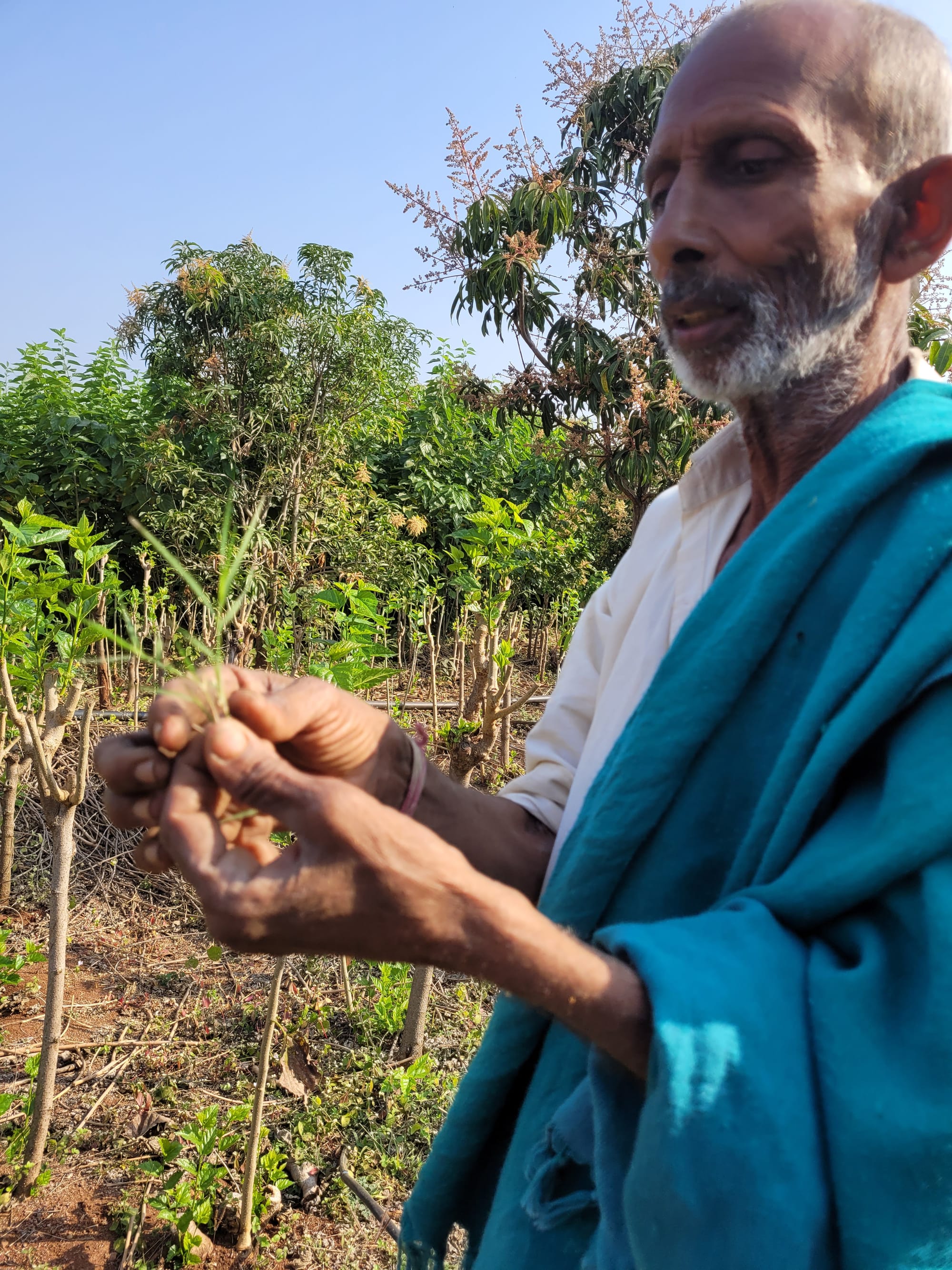
Veerabhushan practices sericulture, agroforestry, horticulture, and field crops farming on roughly 8–9 acres of his land, with the remaining being prepared for the next sowing. A rusty old gate guards the farm’s entrance, beaded with a border of shrubs/plants and a fence. Upon entry, a green silkworm rearing house stands immediately to the right, while a cattle shed lies to the left. A narrow path extends to the extreme end of the farm, with a large plot of mulberry trees on the right, mixed with mango, lemon, and sandalwood trees. An old Bawdi exists on the left, behind an acre soon to be sown with wheat. Walking further along, we noticed a small patch of vegetables grown, extended by an acre of Mulberry. Towards the end, walking a few meters to the left leads us to the large mango grove, followed by an open plot awaiting planting. An acre and more of the land beside the cattle shed is utilised for growing wheat, Maize, and Mustard.

“My living blends with my nature”
While our discussion didn't cease, we remained intrigued by each other’s ideas of farming. “I have a question for those who study agriculture. Why do we need to study it in colleges? Why a syllabus for agriculture? We built these structures without need,” Veerbhushan argued. “Learn agriculture through practice—it’s the only true way. I haven’t learned from any experts today. Whose syllabus are we following? What model are we setting for today’s youth?” His questions left us in a swarm of his versatile and strong arguments about modern agriculture.
Veerabhushan holds courage in his practice and drives it through his decades of wisdom. He remains a very sensitive person with a deep affinity and connection with life on Earth. “My living blends with my nature and, so, does my practice. Today’s lifestyle has lost its connection nature. ನಾನು ಬದುಕಬೇಕು ನೀನು ಸಾಯಬೇಕು (I should live, while you can die) is modern agriculture in a nutshell,” he remarked, Pointing to a bunch of ಕರಿಬೇವು (Curry leaves plants) growing nearby, he added,“This plant grew on its own. I don’t water it or add manure, yet it thrives. This is natural agriculture—no tilling, no weeding, no chemicals. Nature-based farming means learning from your ecosystem and embracing the world of coexistence around us.”

“Nature is endless”
The morning sun silently sweeps through, its hues casting a lively atmosphere across the farm. We walk, feeling the colours of nature in its diverse forms.
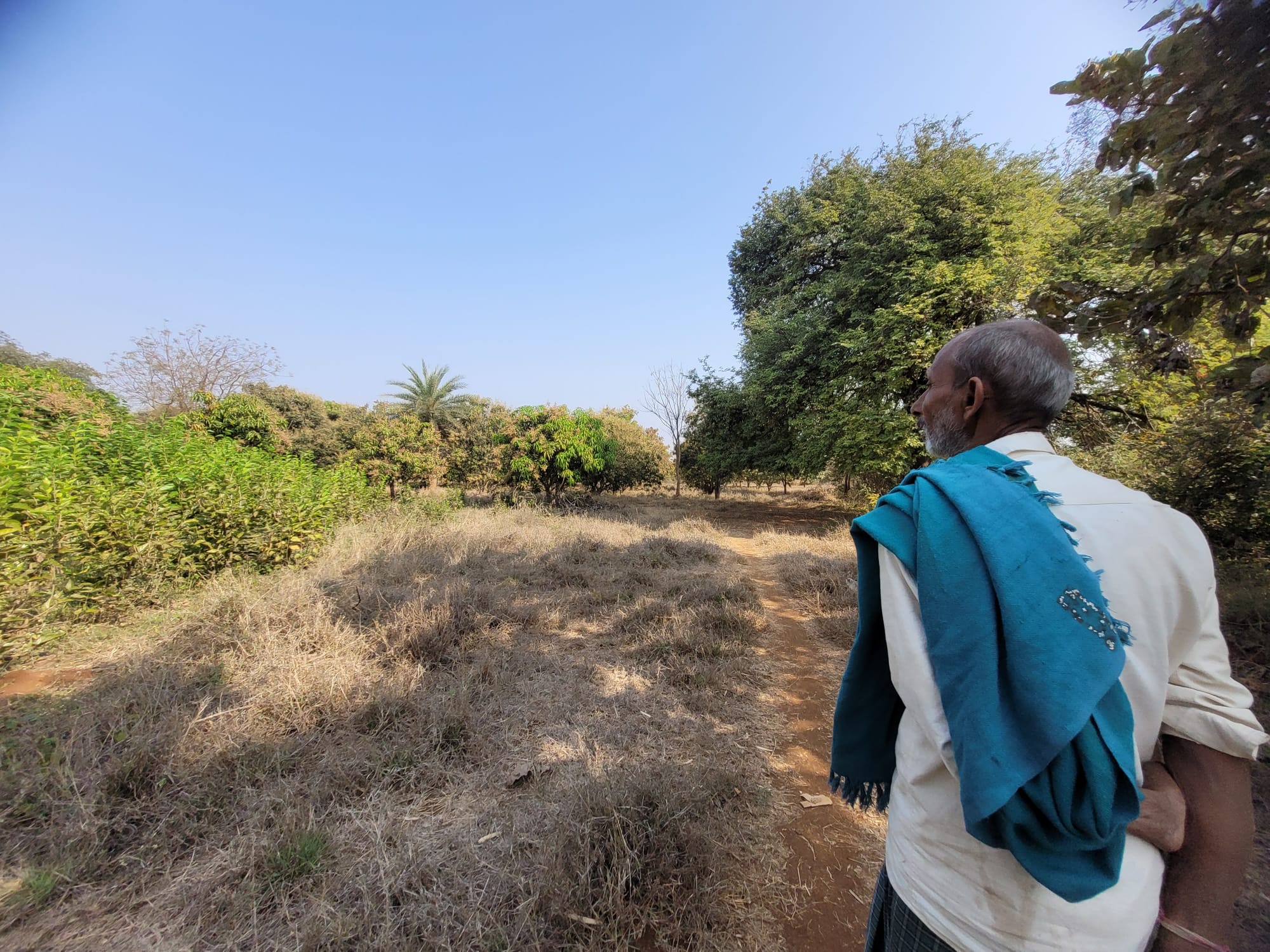
“ಮನುಷ್ಯನ ದೇಹದ ರಕ್ತ ಹಾಗು ಭೂದೇವಿಯ ಗರ್ಭದ ನೀರು ಒಂದೇ” (Blood in a human body and Water in the womb of Mother Earth are the same)”, says Veerabhushan while insisting on the essential need of water to every form of life on Earth.
Veerabhushan practices zero input-based farming, relying entirely on resources within the farm. He manages his equipment and the land’s upkeep himself, eliminating external costs in what is traditionally known as zero-budget farming.
He grows about 25 different types of vegetables on a 10 Gunte land (0.25 acres) over different cycles, where irrigation is facilitated by the drip method. As he mentions, “Nature’s cycle is endless. A farmer who understands ನಿಸರ್ಗ ಚಕ್ರ (the cycle of nature) can truly thrive.””. Surprisingly,, Veerabhushan believes weeding as unnecessary and futile practice. On the contrary, he utilises weeds as a pesticide and manure, crediting to his idea that nature has all the solutions in its abode. Vegetables like Onion, Chilly, Radish, Potato, Brinjal were grown with the presence of Congress (Parthenium) among them.
As an additional manure, Veerabhushan collects ash from different places across the village and uses it as a nutrient supplement (K-Potassium) for the vegetables.
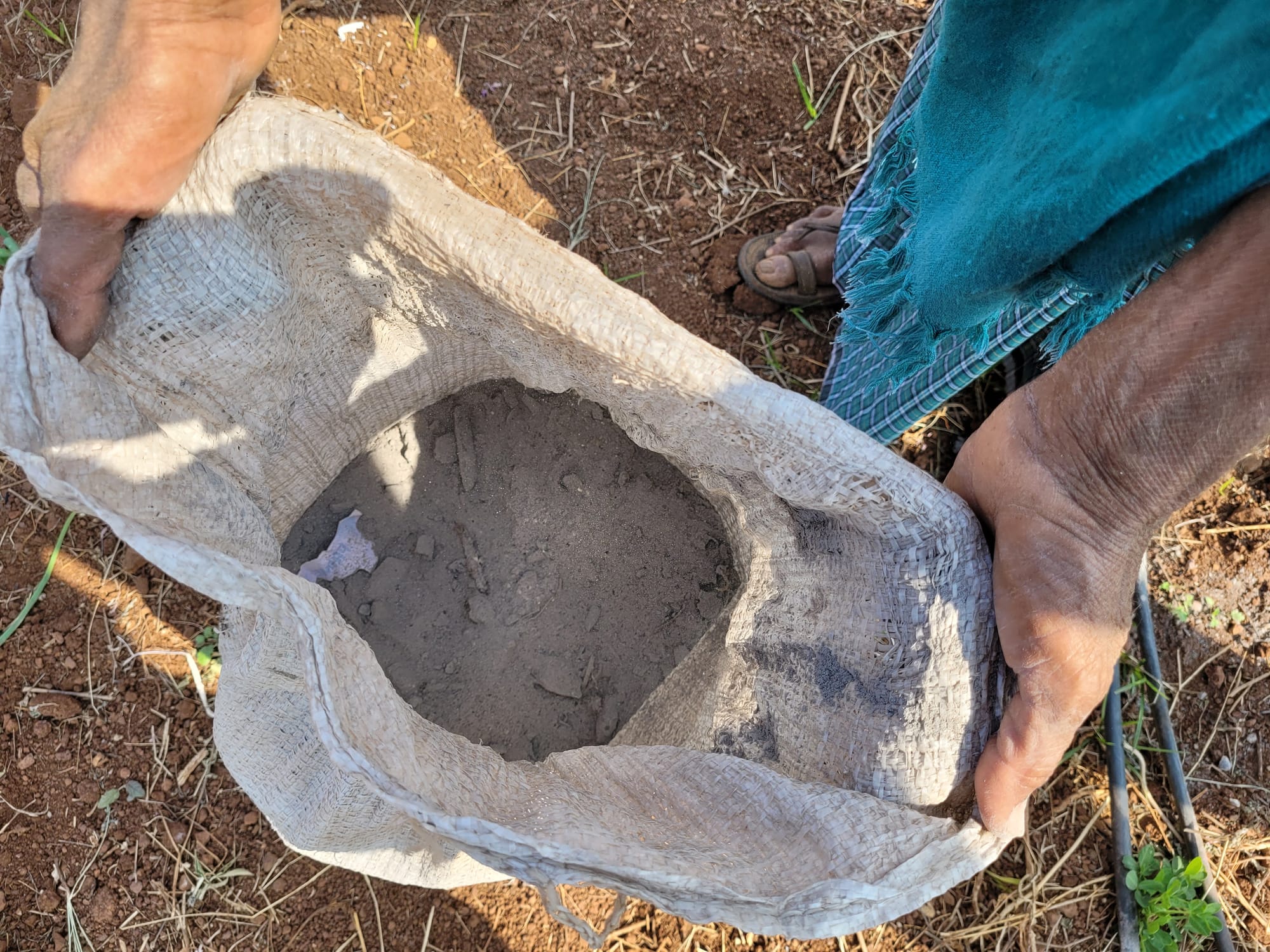
The stretch of land beside the Cattle shed carries Wheat, Maize and Mustard. He practices intercropping in an acre of land, where two types of wheat aregrown, the local variety known as ಜಾವೆ ಘೋಧಿ (Jave Ghodhi) and Sarkari Ghodhi with another acre of land (behind well) to be sown soon. As enquired about disease infestation in maize considering the Fall army worm infestation, an emerging common pest in Maize, he confirms that no such pest attacks were witnessed in his field.
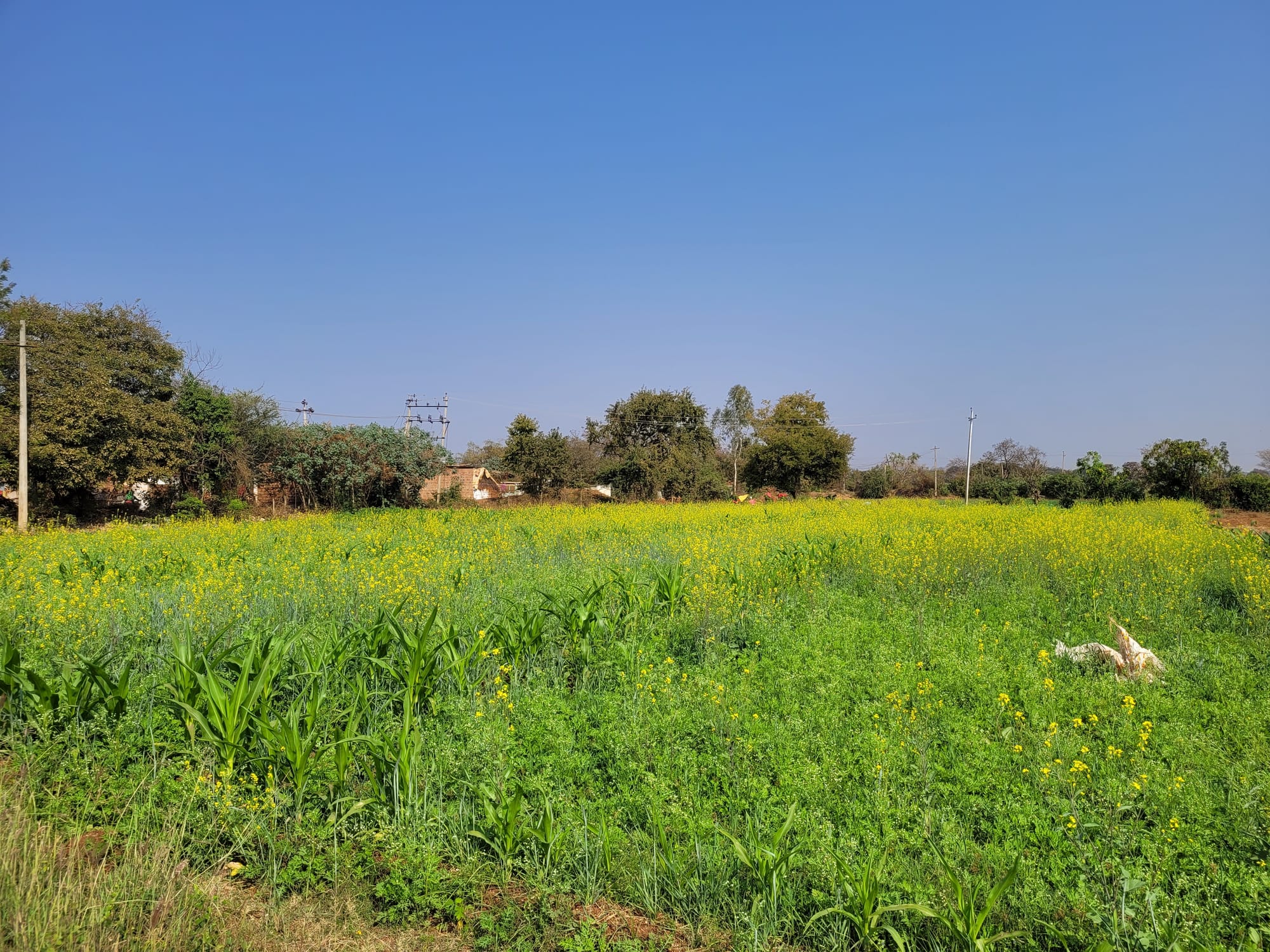
Around the farm's border are shrubs, plants, and trees that serve as fodder, firewood, and windshields. Adjacent to the border, between the Mango grove, and the intercropped patch lies an acre of open land prepared for sugarcane sowing. He plans a demonstration to sustainably grow and preserve sugarcane seedlings as a model for local farmers.
We also noticed large vessels near the bawdi, “They were once used to prepare jaggery in the farm”, he continues,“I firmly oppose the use of sugar, What has sugar brought us other than the disease? The process of refining sugar extracts almost every important nutrient essential for us. What we eat today is a tasty waste. While Jaggery, an important source of calcium, is never advocated. We need to replace sugar with ಬೆಲ್ಲ (Jaggery)” argues Veerabhushan in anguish.
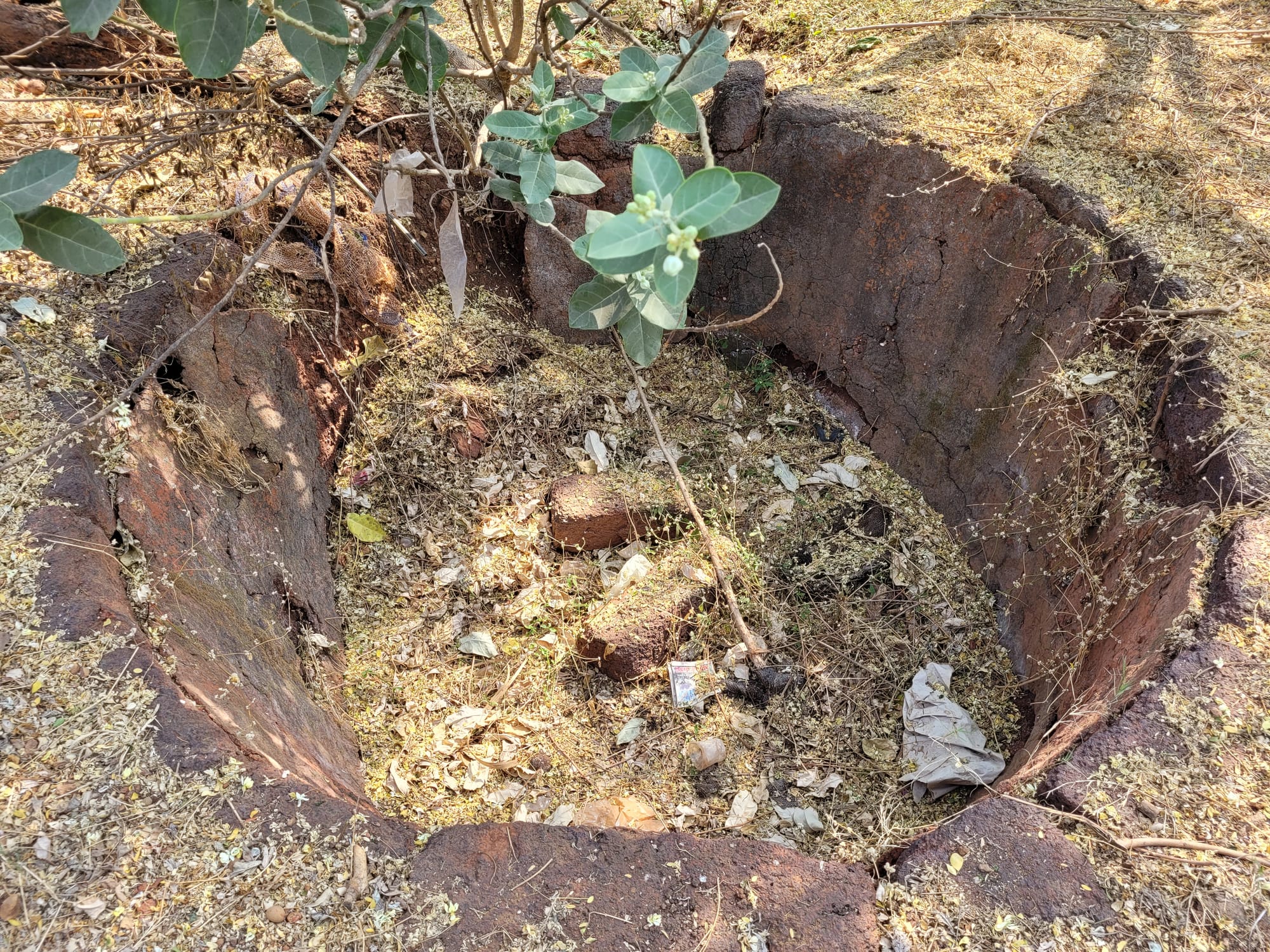
As I asked about other local uses of sugarcane, interestingly, he remarks on the importance of local alcohol breweries. “Once, we had local breweries thriving before large distilleries arrived. I used to prepare jaggery alcohol, and I have strong beliefs that locally made drinks are much healthier, and could improve better functioning of our body organs, I strongly advocate for locally made alcohols and crops”, he said, further reasoning about the terrible impact the green revolution has had on farming, environment, and human health. “Our bodies are adapted to locally grown crops. A lot of modern health issues are tied to non-local, hybrid crops and chemical-based farming.”
Referring to the picture below, the green section (indicated by the yellow arrow) serves as a nutrient reservoir, aiding root development. The black-arrowed ‘eye bud’ initiates root and shoots growth."

“Our Crop, Our Price”
The silkworm rearing house is a low-budget wooden structure with a shed as roof cover. Veerbhushan started this as a supplementary income source and is now expanding to rear more silkworms, fed by the mulberry trees grown on the farm. Lime was used to maintain moisture in the house. He foresees sericulture as a promising occupation and credits Mr. Laxman Rao, a sericulture officer from Bidar, for encouraging local farmers to adopt it.

During our conversation, I shared my experiences from my fieldwork with farmers across the district. He appreciated the work and dedication put in, and eagerly read some of my articles from the website, saying, “I’ll be waiting for my part.” Veerabhushan is an avid reader, he even recommended a few local books that have influenced his life. He has also translated some books into Kannada, and few other regional languages he is aware of.
“Yes, today everyone talks about problems in agriculture. Some people like you talk about climate change, but the system needs to be changed. Today's’ attempts are to find our culture, ತಪ್ಪು ದಾರಿ ಸರಿ ಪಡಿಸುವುದು ಇವತ್ತಿನ ಕೃಷಿ (To mend the wrong ways is today’s agriculture). Nature will reward us once we start looking back and ensure that we co-exist within its cycle” affirms Veerabhushan on learning about my project on climate adaptation and mitigation.
He envisions a shift away from industrial agriculture through a Cultural Revolution., “Today, we have to beg for our rights. Selling crops at our price is our right, MSP (Minimum support price) should be guaranteed to us. Every government has betrayed us, this government is no exception with its current farm laws. His message to future farmers is simple: learn from nature, respect the cycle of life, and reclaim the right to set the price of your crops.
